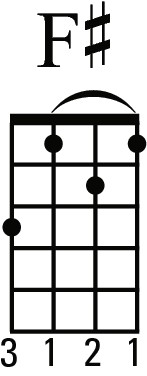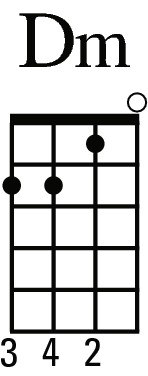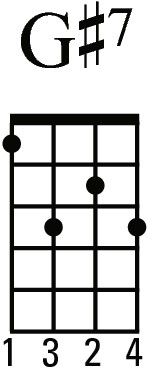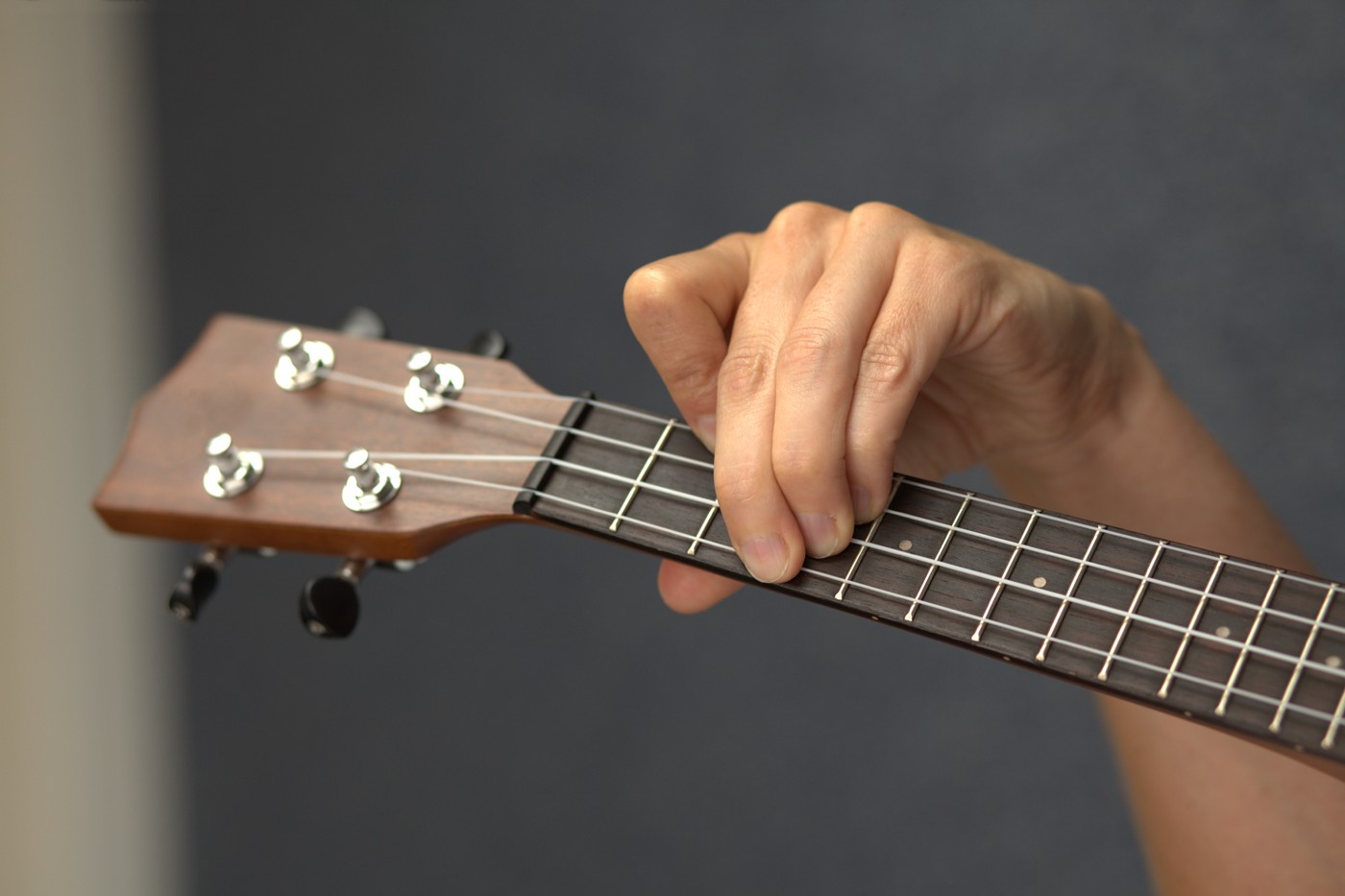Ukulele For Dummies (27 page)
Read Ukulele For Dummies Online
Authors: Alistair Wood

Figure 6-14:
F chord diagram.
chord diagram.

Moving the D minor shape
Some of the open chords have only one open string â this makes the job of turning them into moveable chords much easier.
Follow the steps to make the Dm chord shape moveable. First rearrange your fingers to free your index finger, as shown in Figure 6-15. Now move all the notes up one fret and barre across at the first fret. Here, the barre is only holding down one string: the A-string. Therefore you can just fret that one string as you usually would, creating the E m chord shown in Figure 6-16.
m chord shown in Figure 6-16.
Figure 6-15:
Rearranged Dm chord.

Figure 6-16:
E m chord diagram.
m chord diagram.

Changing the position of the G7 shape
Just like major and minor chords, seven chords can be made into moveable chords.
Take the G7 shape and run through these steps:
1. Refret the chord to free your index finger (using the middle, ring and little fingers).
2. Move the shape up one and barre at the first fret.
3. The index finger is now fretting only one string (the g-string) and so you can relax the barre on the others.
4. The result is a G 7 shape, as shown in Figure 6-17.
7 shape, as shown in Figure 6-17.
Figure 6-17:
G 7 chord diagram.
7 chord diagram.

Taming the dreaded E chord
In the ukulele world one chord strikes fear into the hearts of the brave and reduces grown men to tears: the E chord. Cramming all the required fingers on to the fretboard is awkward, but if you really want to understand the value of moveable chords, the E chord is the best example.
Moveable chords mean that you no longer need to fear E, because you have several options on how to play it: just find the one that suits you best.
The commonest way to form the E chord is to make the D chord into a moveable shape and move it up to the fretboard so that you're playing what's shown in Figure 6-18, with your hands looking like Figure 6-19.
Figure 6-18:
E chord diagram.

Figure 6-19:
E chord fingering.

If you find that position too cramped, try using the moveable shape based on C. Here, you barre across the fourth fret with your index finger and play the A-string at the seventh fret with your little finger (see Figure 6-20) so that your hand looks like Figure 6-21.
If neither of these options appeal, Figure 6-22 shows an open chord version.
 One last option: if the song you're playing is in the key of A, you can substitute the E chord with E7. But don't try this unless the song is in A.
One last option: if the song you're playing is in the key of A, you can substitute the E chord with E7. But don't try this unless the song is in A.